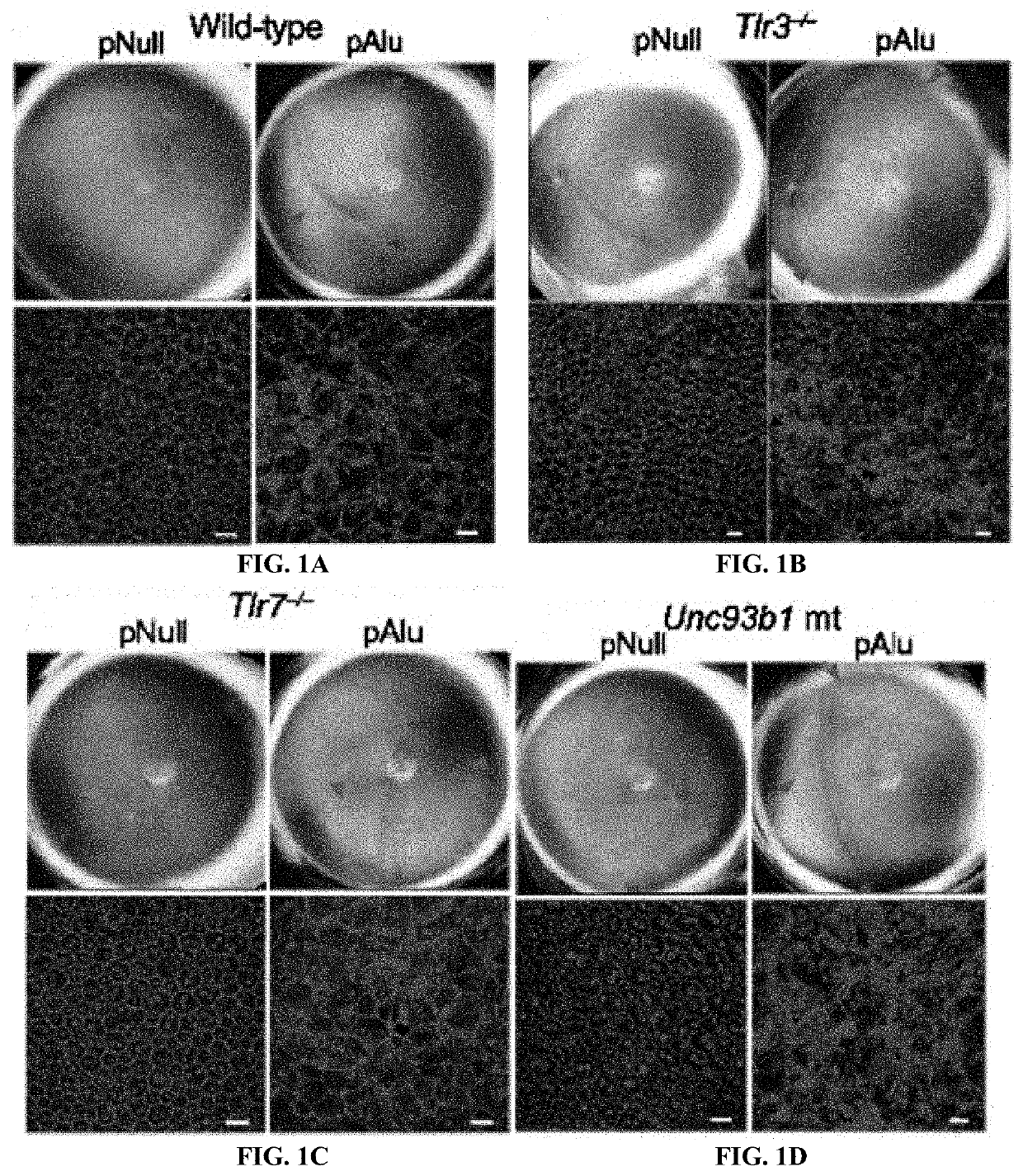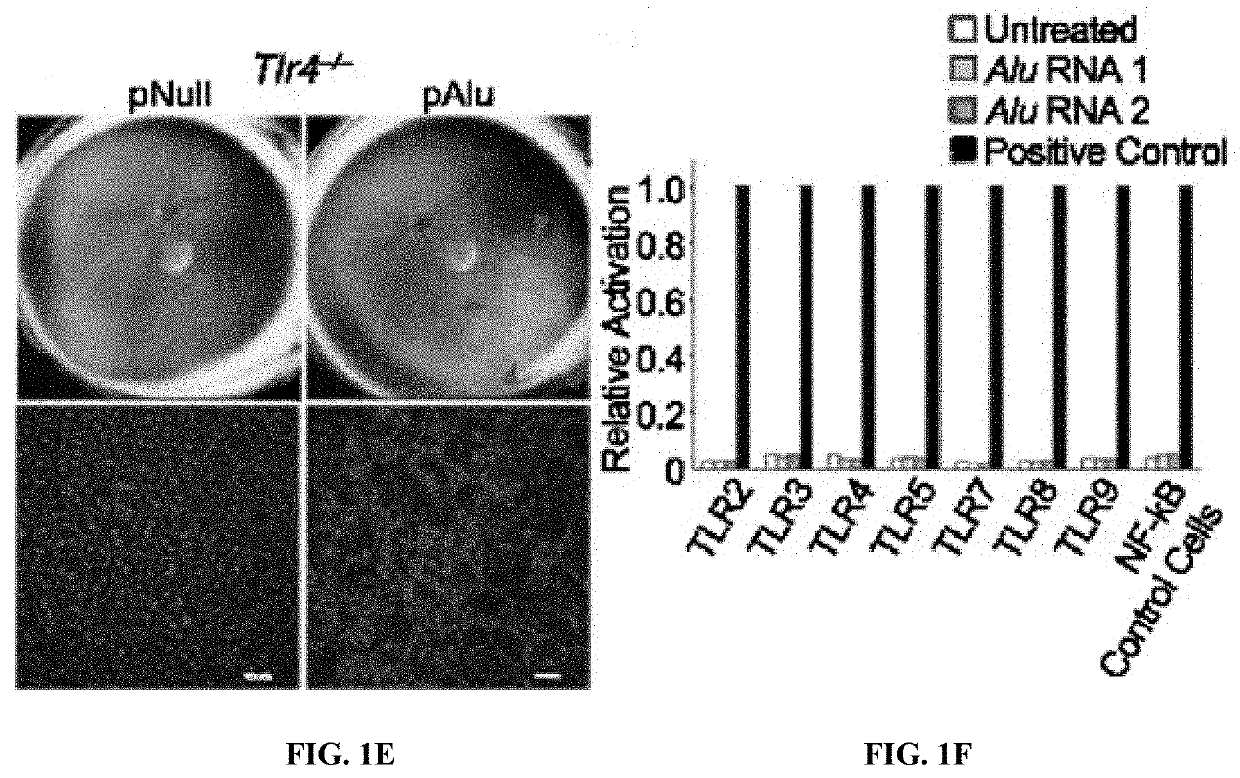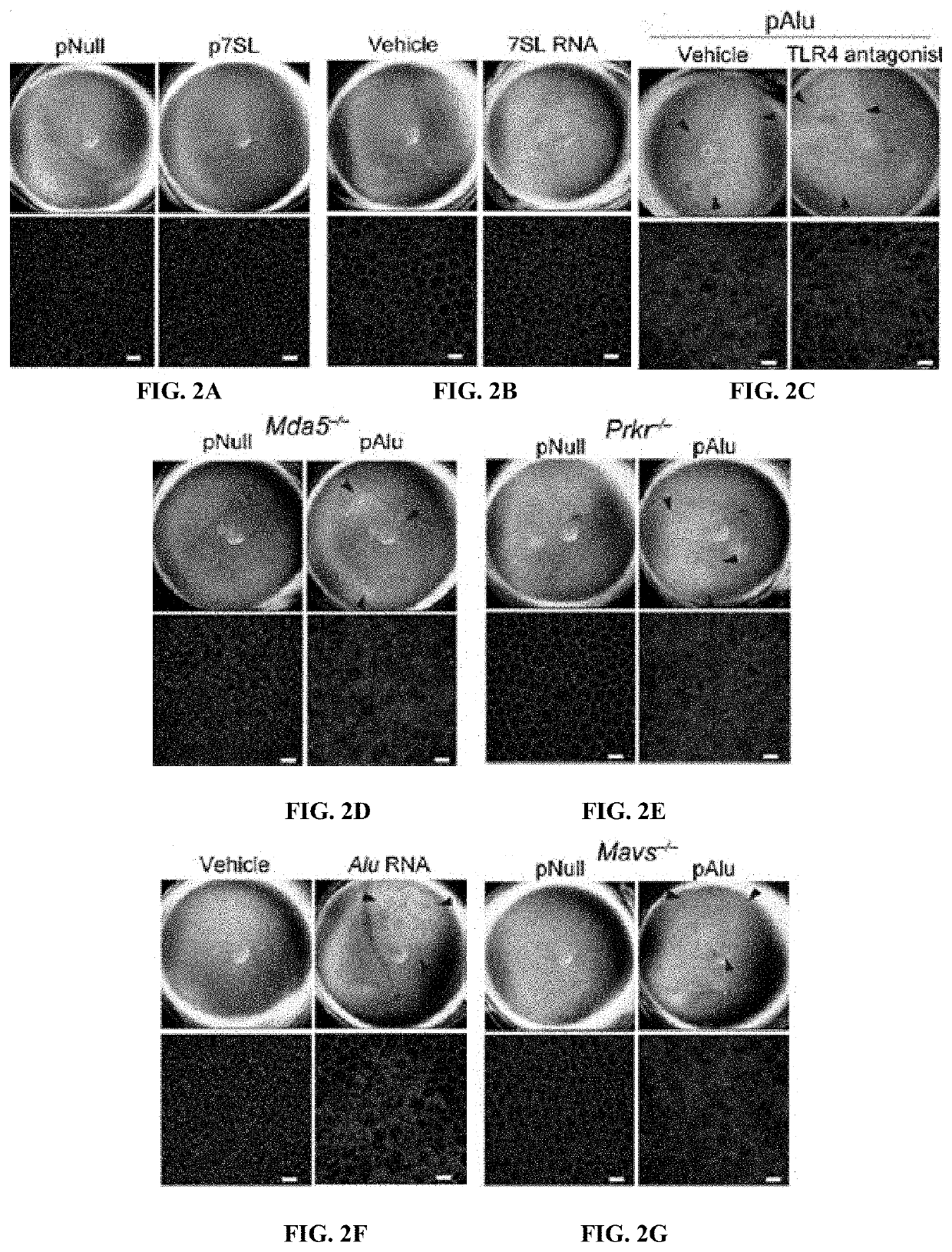Protection of Cells from Degeneration and Treatment of Geographic Atrophy
a technology of cell degeneration and geographic atrophy, applied in the field of cell degeneration protection and geographic atrophy treatment, can solve the problems of untreatable vision loss, profound inflammation, and ineffective treatment of the far more common atrophic form of the disease, and achieve the effects of inhibiting p2x7 activation, and increasing the level of dicer polypeptide associated
- Summary
- Abstract
- Description
- Claims
- Application Information
AI Technical Summary
Benefits of technology
Problems solved by technology
Method used
Image
Examples
example 1
[0064]Subretinal Injection and Imaging.
[0065]Subretinal injections (1 μL) in mice were performed using a Pico-Injector (PLI-100, Harvard Apparatus). In vivo transfection of plasmids was achieved using 10% Neuroporter (Genlantis). Fundus imaging was performed on a TRC-50 IX camera (Topcon) linked to a digital imaging system (Sony). Immunolabeling of RPE flat mounts was performed using antibodies against human zonula occludens-1 (Invitrogen).
[0066]Cell Viability.
[0067]Cell viability measurements were performed using the CellTiter 96 AQueous One Solution Cell Proliferation Assay (Promega) in according to the manufacturer's instructions.
[0068]mRNA Abundance.
[0069]Transcript abundance was quantified by real-time RT-PCR using an Applied Biosystems 7900 HT Fast Real-Time PCR system using the 2−ΔΔCt method.
[0070]Protein Abundance and Activity.
[0071]Protein abundance was assessed by Western blot analysis using primary antibodies recognizing Caspase-1 (1:500; Invitrogen), pIRAK1 (1:500; Therm...
example 2
[0149]It has been have shown that Alu RNA induces RPE degeneration via MyD88 signaling, and that Alu RNA increases phosphorylation of IRAK1 and IRAK4, kinases downstream of MyD88. To determine whether IRAK1 / IRAK4 phosphorylation is critical to Alu RNA-induced RPE degeneration, N-(2-Morpholinylethyl)-2-(3-nitrobenzoylamido)-benzimidazole, an IRAK1 / 4 inhibitor, was tested indeed it was found that this IRAK1 / 4 inhibitor blocked Alu RNA-induced RPE degeneration in wild-type mice in a dose-dependent manner (FIG. 13). With reference to FIG. 13, Alu RNA was injected subretinally in wild-type mice to induce RPE degeneration. Compared to vehicle administration, intravitreous administration of an inhibitor of IRAK1 / 4 reduced the RPE degeneration induced by Alu RNA in a dose-dependent fashion (1.5-15 μs). With reference to FIG. 14, exposure of human RPE cells to an inhibitor of IRAK1 / 4 rescued the cell death induced by transfection of pAlu. With reference to FIG. 15, exposure of human RPE cell...
PUM
| Property | Measurement | Unit |
|---|---|---|
| total volume | aaaaa | aaaaa |
| pH | aaaaa | aaaaa |
| pH | aaaaa | aaaaa |
Abstract
Description
Claims
Application Information
 Login to View More
Login to View More - R&D
- Intellectual Property
- Life Sciences
- Materials
- Tech Scout
- Unparalleled Data Quality
- Higher Quality Content
- 60% Fewer Hallucinations
Browse by: Latest US Patents, China's latest patents, Technical Efficacy Thesaurus, Application Domain, Technology Topic, Popular Technical Reports.
© 2025 PatSnap. All rights reserved.Legal|Privacy policy|Modern Slavery Act Transparency Statement|Sitemap|About US| Contact US: help@patsnap.com



